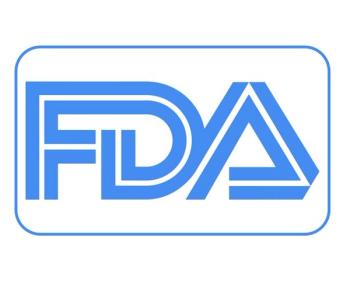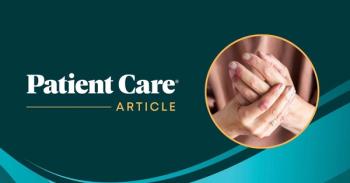
Gender Differences in the Efficacy of Antiretroviral Treatment?
Women account for about a fourth of people living with HIV in the US, and rates among minorities are much higher. Are antiretrovirals as effective for women as for men? Probably, but there are gender-related issues of which doctors need to be aware.
A recent
The question is one worth asking, since women account for a fourth of all adults and adolescents living with HIV in the US and 23% of those infected each year.1 African-American women are disproportionately affected; although they make up 14% of the US population, in 2009 they accounted for 57% of new HIV infections in women and 44% of new infections overall.1 In fact, study results from the
Rates are even higher in some cities; in Washington, DC, for instance, 90% of HIV-infected women are black.1,2
“Clearly, the HIV epidemic is growing and it is disproportionately affecting women, particularly minority women,” said Mariam Aziz, MD, who treats HIV patients at Rush University Medical Center in Chicago, and who is a leading expert on the epidemic among women.
Thus, clinicians and researchers see a need to focus more on how to best prevent and treat HIV among women.
Gender Imbalance in ART Trials
Although pharmaceutical companies are required to report the results of new drug clinical trials by gender, age, and race as part of any new drug application (NDA), the gender results are “rarely published” because too few women are enrolled in the trials to reach any relevant conclusions about possible gender differences in efficacy.3
“Many researchers have hypothesized that efficacy differences between men and women exist that could be related to metabolism and a higher rate of side effects,” said lead author Guoxing (Greg) Soon, PhD, of the Food and Drug Administration’s (FDA) Office of Biostatistics. “These differences could adversely affect outcomes,” he added.
To learn whether such differences do exist, FDA researchers reviewed data from 40 pharmaceutical efficacy trials conducted between 2000 and 2008. The trials’ 20,328 participants and were submitted as part of 18 NDAs.
Researchers found that just 20% of participants were female. They also found that although the incidence of women with HIV in the US increased during that time period, the percentage of women enrolled in the trials decreased, from 27% in 2000 to 12% in 2008.3
However, the data analyzed so far found no statistically or clinically significant differences over 48 weeks of treatment, said Dr. Soon. That means “the regimens commonly prescribed are effective in women,” he said. The meta-analyses showed some significant gender differences in certain drugs that favored men, but also in certain drugs that favored women. However, he noted, “more research is needed to assess gender differences with respect to certain antiretroviral drug combinations.”
Still, the study has an important message for pharmaceutical companies. “More efforts should be directed at recruitment and retention of women in HIV clinical trials,” said Dr. Soon. “Companies should have direct and targeted plans to enroll and retain women so other important research questions with respect to gender differences in efficacy and safety outcomes can be adequately addressed.”
Other Gender Considerations Important
Although this study found no significant differences in ART efficacy overall, there are other issues related to women with HIV that clinicians need to be aware of, said Dr. Aziz.
First, she said, “women are disproportionately affected by HIV because of a complexity of issues like socioeconomic inequality, delayed entry to care, inadequate access to healthcare and high-risk environments that occur because of gender biases.” Women also face significant barriers to diagnosis and engagement in care because of domestic violence and mental health issues, and because of competing priorities such as the inability to take time off of work, child care challenges, and lack of insurance and other economic factors.
All of which may contribute to findings that women seem to experience poorer outcomes in general. For instance, a
“In order to manage some of these issues we need to be aware of the need for active linkage to care,” Dr. Aziz said. That means providing actual appointments to encourage testing, rather than general information, and active case management to assist with insurance issues, housing, and transportation. It means following up with patients who miss visits, and providing women-friendly environments that offer child care, gynecological and obstetrical care, and women’s support groups. “There also needs to be appropriate screening for violence and mental health issues.”
When it comes to initiating ART outside of therapy, however, her advice is supported by the FDA study: “There is no real difference in the choices made for antiretrovirals. It should be based on CD4 count and on symptoms or the presence of opportunistic infections.”
However, clinicians need to be aware of certain gender-related issues with some ARTs, such as the risk for potentially fatal birth defects with efavirenz if used during the first trimester of pregnancy, and the potential for some therapies to reduce the effectiveness of hormone-based contraception.4,5
There is also some data, she noted, suggesting that women experience more treatment-related complications than men.6-8 “Providers should be aware of these since women are much more likely to discontinue medications because of these side effects,” she said.
Of course greater effort also needs to be devoted to opt-out testing and prevention. For women, she said, this means empowering them to take control of their health care and reduce their vulnerability.
References:
REFERENCES
1. Centers for Disease Control and Prevention. HIV Among Women. 2012; http://www.cdc.gov/hiv/topics/women/index.htm. Accessed October 22, 2012.
2. Sun LH. HIV infection rate skyrockets among some DC women. Washington PostJune 20, 2012.
3. Soon GG, Min M, Struble KA, et al. Meta-analysis of gender differences in efficacy outcomes for HIV-positive subjects in randomized controlled clinical trials of antiretroviral therapy (2000-2008). Aids Patient Care STDS. 2012;26(8):444-453.
4. Leticee N, Viard JP, Yamgnane A, et al. Contraceptive failure of etonogestrel implant in patients treated with antiretrovirals including efavirenz. Contraception. 2012;85(4):425-427.
5. Knapp KM, Brogly SB, Muenz DG, et al. Prevalence of congenital anomalies in infants with in utero exposure to antiretrovirals. Pediatr Infect Dis J. 2012;31(2):164-170.
6. Aziz M, Smith KY. Treating women with HIV: is it different than treating men? Current HIV/AIDS reports. 2012;9(2):171-178.
7. Aziz M, Smith KY. Challenges and successes in linking HIV-infected women to care in the United States. Clin Infect Dis. 2011;52 Suppl 2:S231-237.
8. Clark R. Sex differences in antiretroviral therapy-associated intolerance and adverse events. Drug Saf. 2005;28(12):1075-1083.
Newsletter
Enhance your clinical practice with the Patient Care newsletter, offering the latest evidence-based guidelines, diagnostic insights, and treatment strategies for primary care physicians.

















































































































































































































































































